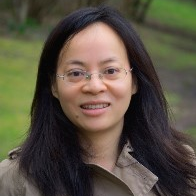Topic Menu
► Topic MenuTopic Editors


Digitalization for Energy Systems
Topic Information
Dear Colleagues,
Reducing carbon emissions while at the same time improving access to energy is a challenging task that will require a transformation of energy systems through decarbonization and decentralized methods. Digitalization of energy systems is a key mechanism to achieve this transformation, as it can support the integration of renewables, improve reliability, and reduce cost. However, existing technologies and infrastructures to support digitalization are not sufficient to achieve the needed radical transformation. This Topic invites scholars to present their work to address some of the outstanding problems related to digitalization of energy systems, e.g., demand response, renewable integration, energy trading, system monitoring and diagnosis.
Dr. Shengrong Bu
Dr. Shichao Liu
Dr. Dawei Qiu
Topic Editors
Keywords
- energy system transformation
- smart grids
- energy access
- energy storage
- demand response
- renewable integration
- energy trading
- multi-energy systems
- microgrids
Participating Journals
| Journal Name | Impact Factor | CiteScore | Launched Year | First Decision (median) | APC |
|---|---|---|---|---|---|

Energies
|
3.2 | 5.5 | 2008 | 16.1 Days | CHF 2600 |

Sensors
|
3.9 | 6.8 | 2001 | 17 Days | CHF 2600 |

Processes
|
3.5 | 4.7 | 2013 | 13.7 Days | CHF 2400 |

Electronics
|
2.9 | 4.7 | 2012 | 15.6 Days | CHF 2400 |

Smart Cities
|
6.4 | 8.5 | 2018 | 20.2 Days | CHF 2000 |

MDPI Topics is cooperating with Preprints.org and has built a direct connection between MDPI journals and Preprints.org. Authors are encouraged to enjoy the benefits by posting a preprint at Preprints.org prior to publication:
- Immediately share your ideas ahead of publication and establish your research priority;
- Protect your idea from being stolen with this time-stamped preprint article;
- Enhance the exposure and impact of your research;
- Receive feedback from your peers in advance;
- Have it indexed in Web of Science (Preprint Citation Index), Google Scholar, Crossref, SHARE, PrePubMed, Scilit and Europe PMC.


